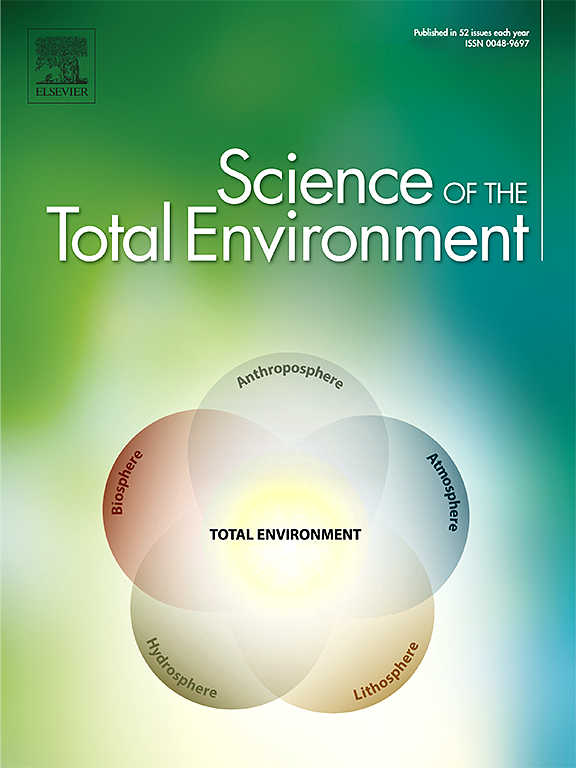Facilitated transport of cadmium by biochar colloids aged with ultraviolet-irradiation in saturated paddy soils
IF 8.2
1区 环境科学与生态学
Q1 ENVIRONMENTAL SCIENCES
引用次数: 0
Abstract
Little is known about the transport of heavy metals such as cadmium (Cd(II)) with aged biochar colloids in natural soils. Herein, we investigated the cotransport behaviors of Cd(II) with ultraviolet-irradiation aged biochar colloids pyrolyzed at 400 °C (ABC400) and 700 °C (ABC700) in saturated paddy soils. Pristine biochar colloids were included for comparison. Our results showed that Cd(II) transport was significantly facilitated by pristine and aged biochar colloids in saturated paddy soils, compared to the negligible breakthrough of Cd(II) without biochar colloids. This is likely because biochar colloids acted as vehicles carrying adsorbed Cd(II) during cotransport. Compared with pristine biochar colloids, the aged biochar colloids (especially ABC400) exhibited a greater enhancement effect, with 1.4–3.7 times Cd(II) transport in soils, likely due to stronger sorption affinity and higher mobility of aged biochar colloids towards Cd(II). Synergistic transport of aged biochar colloids with Cd(II) was relatively lower in the red soil than that in the huangni soil, probably related to the higher content of iron oxides, larger specific surface area, and lower content of soil organic matter in the red soil. A two-site kinetic retention model was employed to successfully simulate the cotransport of aged biochar colloids with Cd(II) in paddy soils. Our findings illustrate that light irradiation could accelerate the mobility of biochar colloids, as well as their synergistic carrier of Cd(II). This could trigger the potential cotransport risks when biochar is applied for field remediation of Cd-contaminated soils over a long period of time.

求助全文
约1分钟内获得全文
求助全文
来源期刊

Science of the Total Environment
环境科学-环境科学
CiteScore
17.60
自引率
10.20%
发文量
8726
审稿时长
2.4 months
期刊介绍:
The Science of the Total Environment is an international journal dedicated to scientific research on the environment and its interaction with humanity. It covers a wide range of disciplines and seeks to publish innovative, hypothesis-driven, and impactful research that explores the entire environment, including the atmosphere, lithosphere, hydrosphere, biosphere, and anthroposphere.
The journal's updated Aims & Scope emphasizes the importance of interdisciplinary environmental research with broad impact. Priority is given to studies that advance fundamental understanding and explore the interconnectedness of multiple environmental spheres. Field studies are preferred, while laboratory experiments must demonstrate significant methodological advancements or mechanistic insights with direct relevance to the environment.
 求助内容:
求助内容: 应助结果提醒方式:
应助结果提醒方式:


